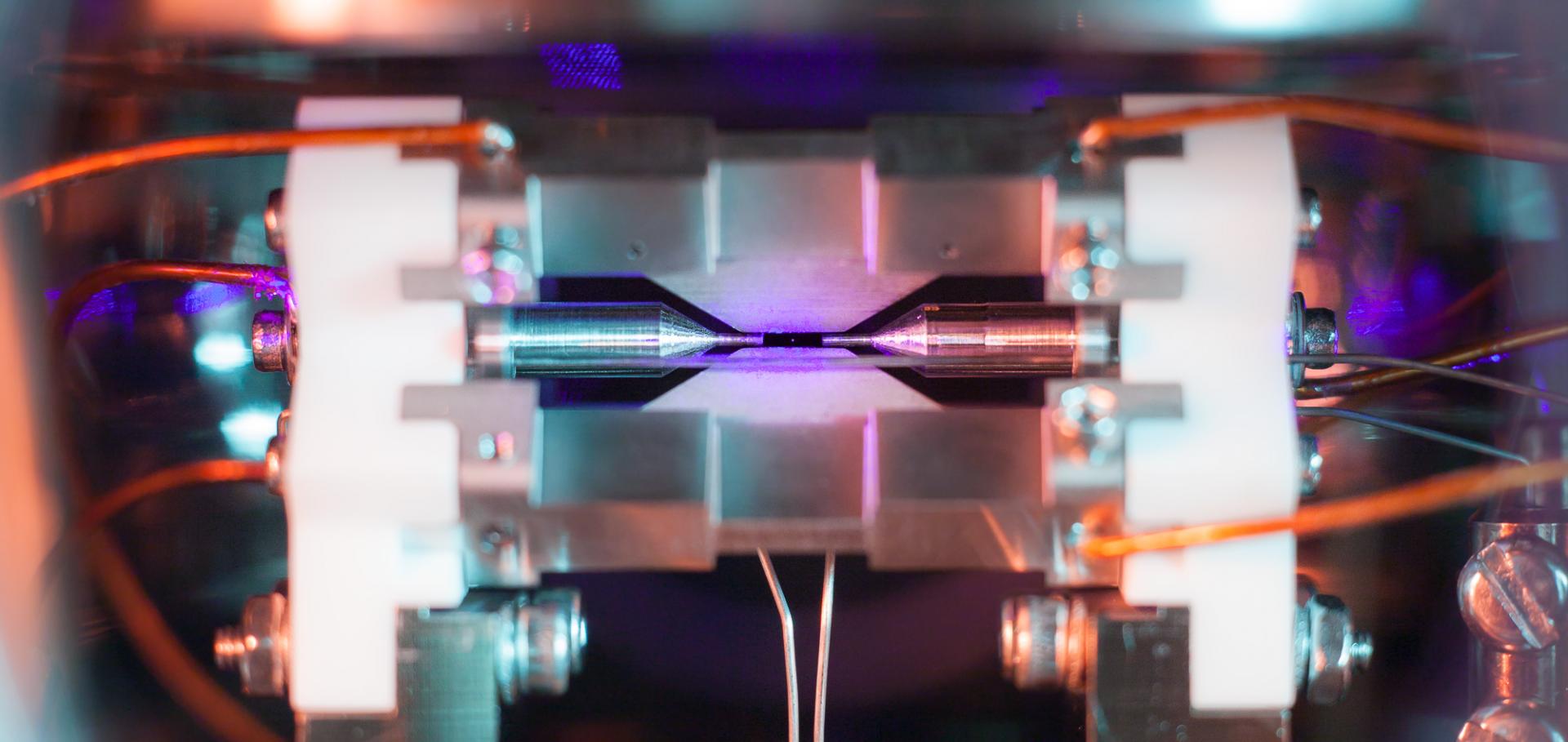A microfabricated ion trap with integrated microwave circuitry
ArXiv 1210.3272 (2012)
Abstract:
We describe the design, fabrication and testing of a surface-electrode ion trap, which incorporates microwave waveguides, resonators and coupling elements for the manipulation of trapped ion qubits using near-field microwaves. The trap is optimised to give a large microwave field gradient to allow state-dependent manipulation of the ions' motional degrees of freedom, the key to multiqubit entanglement. The microwave field near the centre of the trap is characterised by driving hyperfine transitions in a single laser-cooled 43Ca+ ion.A microfabricated ion trap with integrated microwave circuitry
(2012)
Background-free detection of trapped ions
Applied Physics B: Lasers and Optics 107:4 (2012) 1175-1180
Abstract:
We demonstrate a Doppler cooling and detection scheme for ions with low-lying D levels which almost entirely suppresses scattered laser light background, while retaining a high fluorescence signal and efficient cooling. We cool a single ion with a laser on the 2S1/2 ?2P1/2 transition as usual, but repump via the 2P3/2 level. By filtering out light on the cooling transition and detecting only the fluorescence from the 2P3/2 → 2S1/2 decays, we suppress the scattered laser light background count rate to 1 s-1 while maintaining a signal of 29000 s-1 with moderate saturation of the cooling transition. This scheme will be particularly useful for experiments where ions are trapped in close proximity to surfaces, such as the trap electrodes in microfabricated ion traps, which leads to high background scatter from the cooling beam.Heating rate and electrode charging measurements in a scalable, microfabricated, surface-electrode ion trap
Applied Physics B: Lasers and Optics 107:4 (2012) 913-919
Abstract:
We characterise the performance of a surfaceelectrode ion "chip" trap fabricated using established semiconductor integrated circuit and micro-electro-mechanicalsystem (MEMS) microfabrication processes, which are in principle scalable to much larger ion trap arrays, as proposed for implementing ion trap quantum information processing. We measure rf ion micromotion parallel and perpendicular to the plane of the trap electrodes, and find that on-package capacitors reduce this to <~10 nm in amplitude.We also measure ion trapping lifetime, charging effects due to laser light incident on the trap electrodes, and the heating rate for a single trapped ion. The performance of this trap is found to be comparable with others of the same size scale. © Springer-Verlag 2011.Background-free detection of trapped ions
ArXiv 1110.557 (2011)


